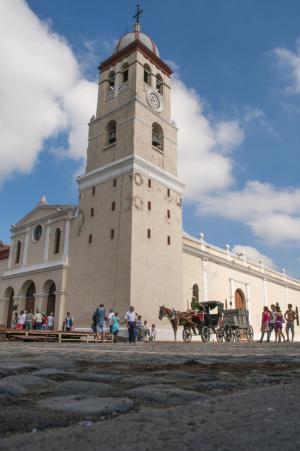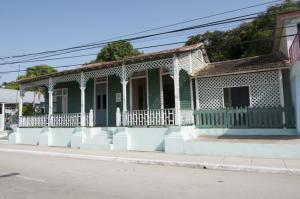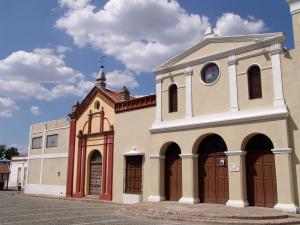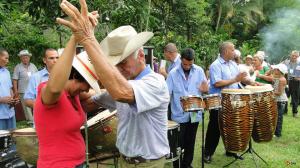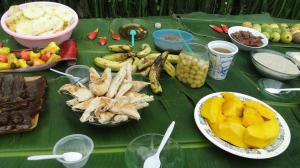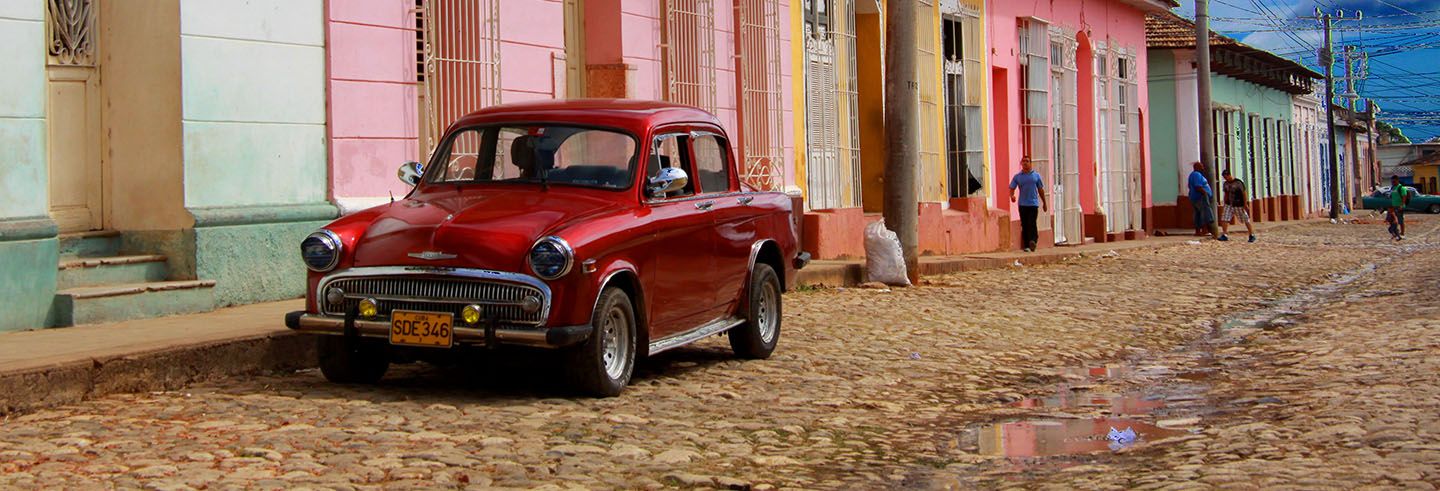

Granma, Cuba
Get to know Granma, a province of Cuba replete with nature and historical enclaves where the Revolution comes alive again
Granma, a province located in the southeastern part of Cuba, is a remote place surrounded by tropical mountains possessing a true Cuban personality. The province of Granma turned into a globally-known place in 1868 when Carlos Manuel de Céspedes let the slaves go. This rebellious event eventually led to the Independence War.
Granma comprises 13 municipalities among which we highlight Yara, Manzanillo, Media Luna, Niquero, Guisa and Bayamo. The last one of these became the province capital. In all of these places Cuba camouflages a wide range of places from the most picturesque where the history, the culture, the landscapes, the nature and the beaches meet creating the perfect holiday destination for you.
Although it is an area not so popular due to the remoteness it enjoys an excellent historical patrimony. The magnificent honorary monuments, the lovely colonial architecture, the big squares and the warm parks filling the province with a typical Cuban ambience are really worth mentioning.
Having a nice walk on its streets you will feel the village soul that has gone through many pirate attacks as well dozens of armed confrontations and still maintained its glory. The development of sugar and fish industries has constituted a region proud of its roots.
Although, the remarkable national parks, such as the Sierra Maestra or the Parque Desembarco del Granma (Granma Disembarkment Park) and beaches like the Las Coloradas benefit nature tourism, the cultural splendour of Granma also attracts the attention of tourists fancying to learn more about the history of this mysterious region.
Index:
- What to see in Granma, Cuba?
- What excursions can one do in province of Granma?
- When travel to Granma?
- How to get to Granma?
- Why is history of Granma important?
What to see in Granma, Cuba?
Granma, one of the most gorgeous and remote provinces in the island of Cuba, comprises an idyllic tourist destination for the ones searching for a remarkable combination of lush nature and the quiet coastal landscape, apart from a significant historical bit.
It is considered as the Cuban territory with the most patrimony monuments and historical places. The main points of interest in the region are located mainly in the south coast and on the mountain chain of Sierra Maestra, among which we emphasise beaches like the Marea del Portillo Beach; rock shapes of high archaeological value like the ones found at Sendero Arqueológico El Guafe (El Guafe Archaeological Route) and the amazing waterfalls as well as underwater terraces that the Parque Nacional Desembarco del Granma (Granma Disembarkation National Park) offers you.
The province enjoys national parks extremely rich in nature and history, such as the Gran Parque Nacional Sierra Maestra (Sierra Maestra Grand National Park); the Parque Nacional Desembarco del Granma, declared World Heritage Site by the UNESCO and the Parque Nacional Turquino (Turquino National Park) where we have the Pico Real del Turquino and the Comandancia de La Plata.
The province capital is Bayamo, the second town founded in 1513 by the Spanish colonizers and declared Monumento Nacional (National Monument) in 1935. It was the stage for pro-independence fights and nowadays it leads the most important events and festivities of the Cuban tradition.
The province of Granma fits perfectly for the tourist’s preferences given the fact that we are talking about a very diverse and with many possibilities for fun. If you fancy diving in the Cuban culture and tradition, you might want to visit the lovely municipalities of Yara, Manzanillo and Bayamo. All these places own astonishing museums, squares that agitate the patriotic atmosphere of the village, historical monuments and a captivating ambience. Additionally, if you search for a peaceful stay far away from civilisation in full contact with nature, a trip through Pilón and Niquero is your choice, as the beaches and national parks surrounding the province are easily accessible.
What excursions can one do in province of Granma, Cuba?
Step into the main towns of Granma by taking the tour Colectivo. Discover the splendour of Manzanillo in one single day, which is a city replete with lovely musical tradition and an important colonial past; and Yara, famous for the grito de Yara that marked the beginning of the war with the metropolis. In Yara you have the Museo Municipal (Municipal Museum) at your disposal. The amazing Caribbean beaches of Marea del Portillo are waiting for you, where can practise different aquatic activities; and Niquero, a small population with numerous monuments in memory of victims of Granma disembarkation.
Go all over the lush vegetation beautifying the paths of Parque Nacional Desembarco del Granma (Granma Disembarkation National Park). A place declared a World Heritage Site by the UNESCO. During this visit you may enter the caves and see the most stunning geomorphological formations in the region in the Sendero arqueológico El Guafe.
Dive in the depths of Sierra Maestra, eye its endemic vegetation and till you get to the Comandancia General de La Plata, a place where Fidel Castro and his acolytes planned the Cuban Revolution.
Make the most of the experience by swinging by the last command post of Ernesto Guevara in Casa Museo la Otilia during the La Otilia hiking excursion. Along the way you get to travel with native flora and fauna of Granma till you get to the town of Buey Arriba. To top off the visit, the organisation offers you a tour around the lovely city of Bayamo.
When travel to province of Granma, Cuba?
Granma is a province worth visiting regardless of the season. One thing that may notice between seasons is the risk of hurricanes. The hurricane season is between June and November that tends to match up with the wettest and the hottest months of the year. On the other hand, the dry season takes place between November and April when the temperatures are lower and the air is not so humid.
However, if the inner power pushing you towards Granma also includes a wish to learn more about the culture of eastern Cuba, then we might want to take into account the folkloric tradition surrounding the island. This way Granma province is no exception, as it owns a wide range of parties in honour of the remarkable cultural patrimony of this area. There are numerous events taking place throughout the year on various occasions where the Granma village gathers together and feels proud of its values, roots and history.
A good date to visit Granma is during La Fiesta de La Cubanía, which always takes place in Bayamo between the 17th and the 20th of October on the occasion of the beginning of Independence. As we are talking about the biggest party in the province it is no wonder that the variety of cultural as well as entertainment activities is large and there is everything for everybody. During those days the streets fill with space for chess games, dance, pipe organ concerts, popular meals, art exhibitions…
Another important date is the 12th of January, a day when the Heroica quema de Bayamo is commemorated that took place on the 12th of January 1869. It was one of the greatest patriotic events in the Cuban village during the revolution for the national liberation. During that day the Céspedes Park turns into a big open-air stage for music, theatre and dance. When night falls the sky is drawn with a superb firework show. This tradition is the most deep-rooted in the Granma culture, an incomparable experience not only for the Cuban, but the ones who interact with the locals and feel a 100% Cuban spirit in this intriguing community.
Very intriguing from the popular culture’s point of view in Granma is the Evento nacional de arrieros y fabulaciones serranas taking place from the 22th till the 24th of June in the municipality of Buey Arriba. This traditional festivity comprises three days to honour native product richness and to organise an artistic talent gala of the Granma village. The event tops off with the tradition saying that the locals have to bathe in the waters of Buey River on San Juan morning, the 24th of June.
If you love gastronomy and you have a chance to travel to Granma in November, you can not miss the amazing Evento Internacional de Cocina (International Kitchen Event) taking place during the second weekend of that month. It consists of a festival dedicated to meditation of tasting art accompanied by all sorts of plastic art expressions that complete this show in all ways. They organise a gastronomy competition where the “Premio a lo cubano” prize is given to the family who get to captivate the panel of judges with a typical plate of the region. It is a good opportunity that local and foreign people work together at the party and they have the privilege to taste plates made in the food trucks.
Get to know the instrument disseminating Cuban culture at the Festival del Órgano Oriental that takes place in Niquero from the 13th till the 16th of August. It is aiming to preserve the musical tradition of this town and to promote its learning. For that a program with dance courses and percussion workshop is organised where everybody is invited.
One of the big contributions to cultural development of the population is made by the Primavera teatral festivity, a gathering among passionate youth passionate of theatre promoting current debates. During the event many art representations, puppet workshops, photograph exhibitions, children’s theatre as well as space for dialogue between art critics and directors. If you are curious and feel special devotion to the theatre, you got to travel to Bayamo in May and it will award you an enriching experience.
Una de las grandes contribuciones al desarrollo cultural de la población lo constituye la celebración de la Primavera teatral, un encuentro entre jóvenes apasionados del teatro que promueve debates de actualidad. Durante el evento tienen lugar representaciones de obras, talleres de títeres, exposiciones fotográficas, teatro infantil, además de la creación de un espacio propicio para el diálogo entre críticos de arte y directores. Si eres curioso y sientes especial devoción por el teatro, sin duda viajar a Bayamo en el mes de mayo será una experiencia muy enriquecedora para ti.
How to get to province of Granma, Cuba?
The particular identity of Granma province is due to its isolation. This distance has made Granma one of the pure and authentic regions in the archipelago with a strong individuality component. Although it is the most remote province in Cuba, the solid transportation network will not let you down and it provides you with trips between the tropical mountains.
Granma has two airports: the Aeropuerto Carlos Manuel de Céspedes (Carlos Manuel de Céspedes Airport), located four km away from the city of Bayamo for national flights and the Aeropuerto de Sierra Maestra (Sierra Maestra Airport) in Manzanillo.
Another common way of transportation to Granma is the coach. The province has provincial bus stations and municipal bus stations that make the journeys easy to Varadero, Havana, Trinidad, Santiago de Compostela among others.
However, to get to places of difficult access, such as Niquero or Manzanillo by public transport, the taxi service is a good option.
Bayamo has a train station 1 km away from the centre offering you its good daily train as well as long train services.
On the other hand, travelling around the interior of Granma province is quite easy if you know all modes of transportation at your disposal. There is a very comfortable and attractive horse ride route including stops at important places, such as the bus station, the train station and Bayamo Hospital. You can not miss the experience of taking a pedicab, as it is a handy way to move about in the centre.
Why is history of Granma important?
To understand better the present Cuba and the province of Granma that is named after the vessel that brought Fidel Castro to the island in 1956, you have to take into account the importance of its history.
The remains of Taino pottery at the Parque Nacional Desembarco del Granma show the presence of native communities long before the arrival of Christopher Columbus in the island. Till the 18th century we talk about an uninhabited province whose early cultures were barely fruitful and that was occupied by corsairs and pirates.
It was October of 1868 when a historical milestone occurred that marked totally the destiny of the island: the owner of a plantation of sugar cane Carlos Manuel de Céspedes requested slavery abolition. As an example, he released his own slaves triggering this way the First War of Independence.
The next historical milestone took place in 1895 with the assassination of the leader of the Cuban Revolutionary Party José Martí, just a month and a half after arriving on the island to start the Spanish-American war of Independence.
The tragedy triggered again in 1956 when Fidel Castro and his acolytes disembarked the Granma yacht on the coasts of this province, more to the point, on the Playa Las Coloradas (Las Coloradas Beach). Wiped out by the troops of Fulgencio Batista, few survivors managed to escape to the depths of Sierra Maestra where they settled in the Comandancia de la Plata. From there they elaborated in difficult conditions a thorough strategy of armed fight, relying on the support of all the people who sympathized with them. Finally, the Revolutionary gained a victory in July 1959.
What are the best accommodations in Granma, Cuba?
The best way to get the most of you stay in Granma is by accommodating in a casa particular (private house). This experience will greatly enrich your visit, as it gives you an opportunity to dive in the lifestyle of the Cuban. There is nothing more astonishing than listening to locals’ stories about the amazing legends of pirates and corsairs that occupied the island.
Additionally, if you prefer a hotel you have numerous options.
The refined Hotel Royalton comprises one of the best accommodation options available in Granma. Located right in the city centre of Bayamo, the hotel owns a glorious colonial design and a terrace on the ground floor with amazing views to Céspedes Park.
Thanks to its excellent geographical location, the Villa de Santo Domingo is without a doubt the best way to stay in a rural environment. Located 24 km from Bartolomé Masó, right at entrance of Parque Nacional de Sierra Maestra (Sierra Maestra National Park) makes up an independent cottage complex dedicated to rest and contemplation of the amazing views composed by a big mountain chain as well as the course of Yara River. This place is known to be the best starting point of routes towards the Pico Turquino (Turquino Peak) and La Plata. Other activities linked to the Villa include bathing in the river, riding on a horse or delighting in listening to traditional music provided by the restaurant. Among Granma people this gorgeous villa is mainly known for having provided accommodation to Fidel Castro and his brother Raúl various times.
Another choice for the ones who fancy nature tourism is the Campismo La Sierrita located 8 km to the south from Bartolomé Masó. It is sited just at the foot of Sierra Maestra mountains and it has 27 rustic bungalows equipped with bathrooms and electricity. You can spend an extremely nice stay if you swing by the restaurant and the river as well.
For tighter budgets, the Hotel Escuela Telégrafo in Bayamo is a highly recommended option. It consists of a studying spot for hotel and catering business students in the region located in a splendid colonial building at Calle Saco. The go-ahead spirit of the young students fill the place with vitality and dynamism. We must highlight the great restaurant located on the ground floor of the establishment next to the lobby where you get the chance to taste the best plates of Bayamo.
Interactive map:
Granma:
Bayamo
What to see:
Manzanillo
What to see:
Niquero
What to see:
Other nearby destinations:
Why "Cuban Travel Agency"?
"Cuban Travel Agency" is part of the Visitar Cuba project, an organization of Cuban agencies whose objectives are:
- ✓ Disseminate Cuba, its culture and its heritage.
- ✓ Promote sustainable tourism.
- ✓ Support the local economy, prioritizing direct contact with Cuban agencies.
- ✓ Offer budgets without commitment and without cost, from the hand of Cuban experts.
Travel agencies and Tour Operators
If you are an agency or tour operator and you are looking for help to create trips to Cuba, trust our expert hands, we offer special prices.
© www.CubanTravelAgency.Org - All rights reserved.



